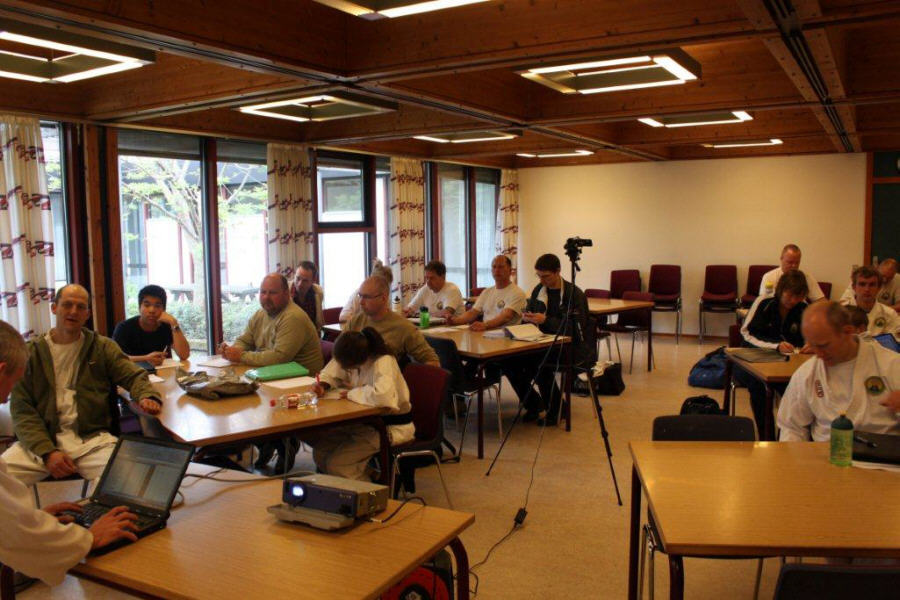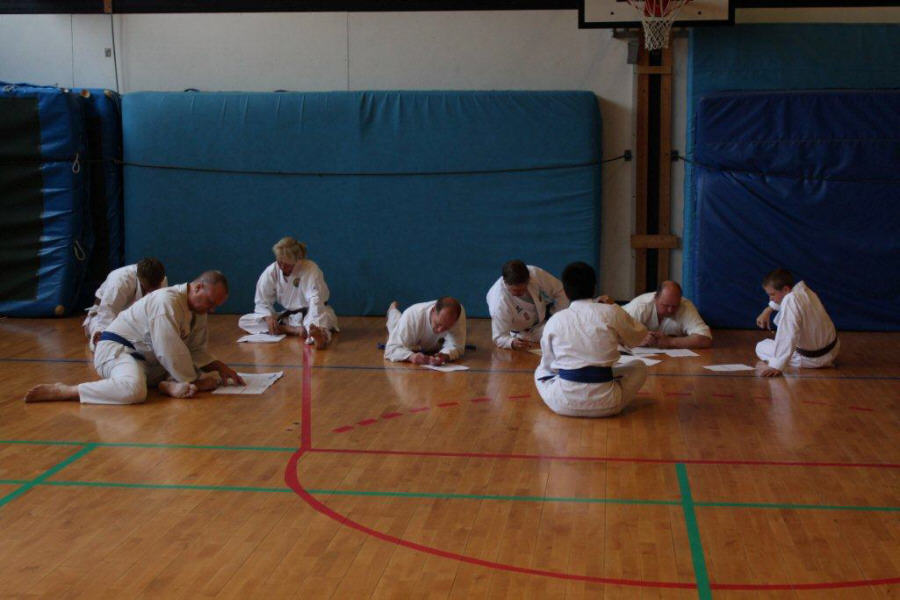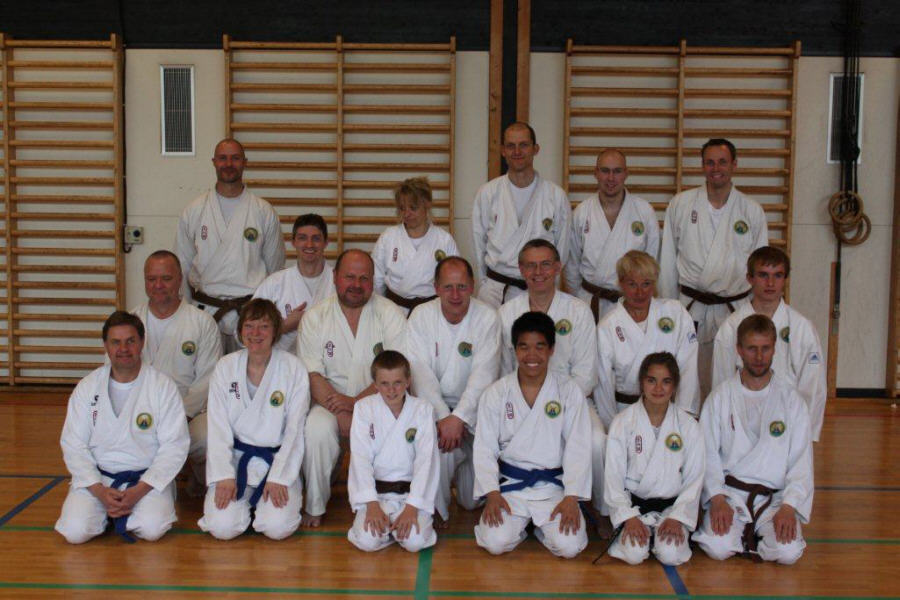On Saturday 15 May 2010, Shindenkan's Instructor Course 3 was held for the first time. The course lasted approx. 4 hours and was held in Greve with 23 fresh participants who were all current or future team instructors who in the coming season will teach local teams at TG1 level, TG2 level or TG1 and TG2 level together.

As on all other courses, it is Kimu Sensei who has provided the framework and, as chairman of the steering group, has been the one who has held on to the common thread of the course. The actual preparation of the course and the course material was done by Jens Kyoshi with the help of the entire Chief Instructor Group (Shihan-kai). Finally, the course was tested and approved by Kimu Sensei.
The Shindenkan preparation process is designed to ensure optimal collection and transfer of knowledge and experience to SNIG ("Shindenkan Next Instructor Generation").
There are a total of 8 instructor courses which gradually educate and build instructor competence to honbu level. Out of the 8 Instructor courses, courses 1,2 and 5-8 have already been held previously. So it was the first time that Shindenkan held Instructor course 3.
Shindenkan Instructor Course 3 is training for a competent local team instructor and the course is a prerequisite, experience base and foundation for the advanced Instructor Course 4, "Chief instructor for local school".
The purpose of Shindenkan Instructor Course 3 is to train the course participants in the use of Shindenkan's methods, tools and through practical case examples, and to develop the participants into competent team instructors.
It is a practical management course with quick and immediate chaos arising when there is no managerial overview, action and leadership behind it. This course is aimed at the participants being able to apply this knowledge and experience to others and themselves, in and outside the dojo (training hall).
The purpose of the course is to put the instructors in a situation under the greatest possible pressure from several sides in the shortest possible time, so that they can learn from their own reactions and leadership qualities during and afterwards. Thus this can serve them inside and outside the dojo. This also means that Kimu Sensei had organized the course and executed it with "a high pulse of urgency", thus the most optimal forum for atmosphere for learning purpose can take place. There is therefore no reason to put the participants in a situation that they are used to dealing with on a daily basis, as the course is a practical leadership development course.
Instructor course 3 has a weighting of 20 % in the classroom and 80 % practice in the dojo. The 23 students were divided into two teaching groups and were led through 2 cases with two passages in each, which were reinforced by various role-plays, all of which had their origin in real-life experiences.

The entire course was run according to a very tight schedule with Jens Kyoshi as the whip in and the very experienced chief instructors, who through roles could reinforce the effect and learning in the various groups, who individually had to act as the leading team instructor during each case, with subsequent group evaluation and collection of chief instructors.
Jens Kyoshi summarized the overall learning and realization from the day, with the following messages:
- Always start with your own setting – This is crucial
- Arrive positive and well prepared for today's training.
- Show closeness, inspiration and joy in both teaching and training.
- Create an atmosphere that makes students want to come to training again.
- Never shy away from conflict, instead be constructive and proactive about the situations that arise
Always maintain dojo-kun because dojo-kun gives
- Correct Safety in the dojo.
- A proper learning environment
- A correct Setting in the students
- Is a prerequisite for getting your messages through
- Is a prerequisite for there to be room for everyone
- Plan the training and follow the plan.
- Always plan the messages into the plan so that they come out naturally.
- Use lots of repetition and underline your messages with actions.
- Finish by repeating the messages.
Remember – It is the instructor who must ensure the correct matching of expectations among the team's students, i.e. remember to communicate the syllabus handbook's requirements, the requirements about when you must have passed the various courses to explain the importance of attendance and participation in courses if you want to graduate - again and again.
At the end of Shindenkan Instructor Course 3, each participant completed a SWOT on themselves and their abilities as a local team instructor. (A SWOT = Strength, Weakness, Opportunities, Threats).





